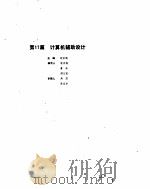《计算机辅助管理释义手册》
| 作者 | 中国航空工业企业管理协会编 编者 |
|---|---|
| 出版 | 北京:航空工业出版社 |
| 参考页数 | 385 |
| 出版时间 | 1997(求助前请核对) 目录预览 |
| ISBN号 | 7801340515 — 求助条款 |
| PDF编号 | 87618318(仅供预览,未存储实际文件) |
| 求助格式 | 扫描PDF(若分多册发行,每次仅能受理1册) |

第一篇信息技术综合应用1
一、科技与工业1
1.计算机辅助管理(CAA:Computer-Aided Administration)1
2.计算机辅助设计(CAD:Computer-Aided Design)1
3.计算机辅助制造(CAM:Computer-Aided Manufacturing)1
4.计算机辅助工艺规划(CAPP:Computer-Aided Polytechnic Planning)1
5.计算机辅助教学(CAI:Computer-Assisted Instruction)2
6.计算机辅助诊断(CAD:Computer-Aided Diagnosis)2
7.计算机仿真(Computer Simulation)2
8.集成化信息系统(IIS:Integrated Information System)2
9.数字图像处理(Digital Image Processing)3
10.三维造型技术(Three-Dimemnsional Technique)3
11.条码技术(Barcode Technique)3
12.几何造型技术(Geometric Modeling Technique)4
13.计算机集成制造(CIM:Computer Integrated Manufacturing)4
14.分散型控制系统(DCS:Distributed Control System)4
15.制造自动化协议(Manufacturing Automation Protocol)4
16.机电一体化(Mechatronics)4
17.工控机(ICC:Industrial Control Computer)5
18.过程控制(Process Control)5
19.信息产业(Information Industry)5
20.软件产业(Software Industry)5
二、智能技术6
1.人工智能(AI:Artificial Intelligence)6
2.智能电话(Intelligent Telephone)6
3.智能仪器(Intelligent Instrument)6
4.智能网络(Intelligent Network)6
5.智能控制(Intelligent Control)7
6.计算机视觉(CV:Computer Vision)7
7.语音识别(Speech Recognition)7
8.语音合成(Speech Synthesis)7
9.语音信号处理(Speech Signal Processing)8
三、信息与数据库8
1.信息资源管理(Information Resource Management)8
2.公共数据网络(PDN:Public Data Network)8
3.信息服务(Information Service)8
4.数据仓库(Data Warehouse)8
5.多媒体数据库(MDB:Multimedia Database)9
6.面向对象数据库(OODB:Object-Oriented Database)9
7.空间数据库(Space Database)9
8.数据加密(Data Encryption)9
9.数据压缩/还原技术(Digital Compression/Decompression technology)9
10.模糊查询(Indistinct Inquire)10
11.信息建模技术(Information Modelling Technology)10
12.信息中心(Center of Information)10
四、信息网与数据通信10
1.信息高速公路(ISW:Information Superhigh Ways)10
2.计算机通信网(Computer Communication Network)11
3.数据通信(Data Telecommunication)11
4.全球信息网(WWW:World Wide Web)11
5.扩频通信(Spread Sprectrum Communication)11
6.光纤通信(Optical Fiber Communication)12
7.卫星通信(Satellite Communication)12
8.数据传输(Data Transmission)12
9.帧中继(Frame Relaying)13
10.“金桥”工程( Gloden Bridge Engineering)13
11.“金关”工程( Golden Pass Engineering)13
12.“金卡”工程( Golden Card Engineering)14
13.“金”字系列工程14
14.电子数据交换(EDI:Electronic Data Interchange)14
15.EDI系统的结构(Structure of EDI System)15
16.EDI标准(EDI Standards)15
17.EDIFACT标准16
18.ANSI X.12标准16
19.金航信息工程17
20.CHINAPAC17
21.CHINADDN17
22.CERNET18
23.CHINANET18
24.公共电话网(PSTN:Public Switch Telephone Network)18
25.综合业务数字网(ISDN:Integrated Service Digital Network)19
26.校园网(Campus Network)19
27.企业网(Enterprise Network)19
28.地理信息系统(GIS:Geographic Information System)20
29.饭店管理信息系统(Hotel Management Information System)20
30.商场信息系统(Supermarket Information System)20
31.销售点系统(POS System:Point-Of-Sale System)20
32.银行信息系统(Bank Information System)20
33.国家经济信息系统(National Economical Information System)21
五、办公自动化21
1.智能大厦(IB:Intelligent Building)21
2.电子邮件(E-mail:Electronic Mail)21
3.电子信箱(Electronic Mailbox)22
4.电算化财务(Computerization Accounting)22
5.智能办公室(Intelligent Office)22
6.移动办公室(Moveable Office)22
六、社会生活23
1.计算机作曲(Computer Composing)23
2.计算机写作(Computer Writing)23
3.计算机动画(Computer Animation)23
4.计算机词典(Computer Dictionary)24
5.计算机图书馆(Computer Library)24
6.计算机翻译(Computer Translating)24
7.计算机秘书(Computer Secretary)25
8.电子音乐(Electronic Music)25
9.计算机音乐(Computer Music)25
10.电子乐器(Electronic Musical Instrument)26
11.电子编辑(Electronic Editing)26
12.电子出版物(Electronic Publication)26
13.电子笔记本(Electronic Notebook)27
14.电子购物(Electronic Shopping)27
15.电子票据(Electronic Bill)27
16.电子卡片(Electronic Card)28
17.电子货币(Electronic Money)28
18.计算机游戏(Computer Game)28
19.数字特技(Digital Stunt)29
20.图文电视(Teletext)29
21.计算机广告设计技术(Computer Advertising Design Technology)29
22.增值业务网络(VAN:Vocational Addition Network)30
23.文档查询服务(Archire Inquiry Service)30
24.网络新闻服务(Netnews Service)30
25.动态信息服务网(Dynamic Information Service Network)31
七、计算机技术31
1.硬件平台(Hardware Platform)31
2.软件平台(Software Platform)31
3.集成软件(Integrated Software)31
4.窗口软件(Software for Windows)32
5.软件可靠性工程(The Reliability Engineering of Software)32
6.伪码编译器(The Compiler of Pseudocode)32
7.程序重构技术(PRT:Program Restructuring Technology)32
8.应用生成器(AG:Application Generator)33
9.程序移植(PT:Program Transplant)33
10.程序设计环境(Programing Environment)33
11.编程模型(Programming Model)33
12.汉字系统(CCOS:Chinese Character Operating System)34
13.网络汉字系统(NCCOS:Network Chinese Character Operating System)34
14.中文平台(CCP:Chinese Character Platform)34
15.分布式文件系统(DFS:Distributed File System)34
16.杀病毒软件(The Software for Killing Virus)34
17.防病毒卡(Antivirus Card)35
18.网络防病毒系统(Network Antivirus System)35
19.计算机安全技术(Computer Security Technology)35
20.软件保护技术(PTCS:the Protect Technology of Computer Software)36
21.人机交互对话(Man-Machine Dialog)36
22.绿色电脑(Green Computer)36
23.笔记本计算机(Notebook Computer)36
24.邮件服务器(Mail Server)36
25.图形编辑技术(Picture Editing Technology)37
26.加密系统(ES:Encrypted System)37
参考文献37
第二篇现代管理技术与方法38
一、现代管理方法38
1.系统论(System Theory)38
2.控制论(Cybernetics)38
3.信息论(Information Theory)39
4.耗散结构论(Dissipative Structure Theory)39
5.协同论(Synergetics)40
6.突变论(Catastrophe Theory)40
7.系统工程(Systems Engineering)41
8.运筹学(Operations Research)41
9.模糊数学(Fuzzy Mathematics)41
10.大系统(Large Scale System)42
11.最优化技术(Optimization Technique)42
12.线性规划(Linear Programming)43
13.整数规划(Integer Programming)43
14.非线性规划(Nonlinear Programming)44
15.动态规划(Dynamic Programming)45
16.图论(Graph Theory)45
17.网络计划(Network Planning)46
18.关键线路法(CPM:Critical Path Method)46
19.计划评审技术(PERT:Program Evaluation and Review Technique)46
20.图示评审技术(GERT:Graphical Evaluation and Review Technique)47
21.风险评审技术(VERT:Venture Evaluation and Review Technique)47
22.排队论(Queuing Theory)49
23.系统仿真(System Simulation)49
24.决策论(Decision Theory)50
25.确定型决策(Deterministic Decision)50
26.不确定型决策(Uncertainty Decision)50
27.随机型决策(Stochastic Decision)51
28.多目标决策(Multiple Objective Decision)52
29.风险分析(Risk Analysis)52
30.对策论(Game Theory)53
31.预测(Forecast)53
32.德尔菲法(Delphi Method)54
33.层次分析法(AHP:Analytic Hierarchy Process)54
34.投入产出模型(Input-Output Model)55
35.回归分析(Regression Analysis)56
36.时间序列分析(Time Series Analysis)56
37.项目管理(Project Management)57
38.工作分解结构(WBS:Work Breakdown Structure)58
39.S-曲线(S-Curve)58
40.企业形象识别系统(CIS:Corporate Identity System)58
二、工业工程与现代制造系统59
1.工业工程(Industrial Engineering)59
2.设施规划与设计(Facility LayoutDesign)60
3.设施布置(Facility Layout)61
4.按产品布置(Product Layout)61
5.按工艺布置(Process Layout)61
6.成组布置(Group Layout)62
7.固定工位式布置(Fixed Product Layout)63
8.物流系统(Logistics System)64
9.物料搬运(Material Handling)65
10.库存管理(Inventory Management)65
11.工作研究(Work Study)65
12.方法研究(Method Study)66
13.作业测定(Work Measurement)66
14.MOD法67
15.工效学(Ergonomics)67
16.人机工程学(Man-Machine Engineering)67
17.产品寿命周期成本(Product Life Cycle Cost)68
18.产品交付计划(Product Delivery Schedule)68
19.主进度计划(Master Schedule)68
20.作业日历计划(条图)(Bar Chart)69
21.装配大纲(装配指令)(AO:Assembly Order)69
22.制造大纲(制造指令)(FO:Fabrication Order)70
23.制造顺序文件(Manufacturing Sequence Files)71
24.企业流程改造(BPR:Business Process Reengineering)71
25.企业组织机构的平面化(Organization Flatten)72
26.目标管理(Objective Management)72
27.资产经营型管理(Assets Operations Management)73
28.企业诊断(Company Diagnosis)73
29.数控机床(NC:Numerical Control Machine Tool)74
30.加工中心(FC:Fabricate Center)75
31.柔性制造系统(FMS:Flexible Manufacturing System)75
32.机器人(Robot)75
33.立体仓库(Cubic Warehouse)76
34.计算机集成制造系统(CIMS:Computer Integrated Manufacturing System)76
35.计算机集成制造系统的基本组成(Basic Components of CIMS)76
36.工程设计自动化系统(Engineering Design Automation System)77
37.制造自动化系统(Manufacturing Automation System)77
38.成组技术(GT:Group Technique)78
39.推式生产系统(Push Production System)78
40.拉式生产系统(Pull Production System)78
41.适时制(JIT:Just-In-Time)78
42.看板管理系统(Kanban)79
43.全面质量控制(TQC:Total Quality Control)79
44.质量保证系统(Quality Assurance System)79
45.继续质量改进(CQI:Continuous Quality Improvement)80
46.并行工程(CE:Concurrence Engineering)80
47.精益生产(Lean Production)80
48.敏捷制造(Agile Manufacture)81
49.计算机辅助质量控制(CAQC:Computer Aided Quality Control)81
50.自动化零件估价技术(Automatic Part Valuation Technique)81
51.自动数据处理(Automatic Data Processing)81
52.自动化工程管理信息系统(AEMIS:Automatic Engineering Management82
Information System)82
53.自动化编程工具(APT:Automatic Programming Tool)82
54.自动化零件发放(Automatic Part Release)82
55.装配时间标准(Assembly Time Standard)82
三、制造资源计划(MRP Ⅱ)83
1.制造资源计划MRPⅡ(Manufacturing Resource Planning)83
2.MRPⅡ的功能模块(Function Modules of MRPⅡ)83
3.MRPⅡ中计划的层次(Planning Level of MRPⅡ)83
4.独立需求(Independent Demand)84
5.相关需求(Dependent Demand)84
6.工程项目型生产(Engineering Project Type Production)84
7.车间任务型生产(Job Shop Task Type Production)84
8.重复生产(Repetitive Manufacturing)85
9.为订单生产(Make-to-Order)85
10.为存货生产(Make-to-Stock)85
11.为订单装配(Assemble-to-Order)85
12.产品结构树(Product Structure Tree)85
13.物料清单(Bill of Material)85
14.虚单(Phantom Bill)86
15.虚拟项目(Phantom Item)86
16.制造物料清单(Manufacturing Material Bill)87
17.低位码(Low Level Code)87
18.库存记录(Inventory Record)87
19.提前期(Lead Time)87
20.批量(Lot Size)87
21.定货策略(Order Policy)87
22.按需订货法(Lot-for-Lot)88
23.固定批量法(Fixed Order Quantity)88
24.固定周期法(Fixed Period Requirement)88
25.经济批量法(EOQ:Econnmic Order Quantity)88
26.最小单位成本法(LUC:Least Unit Cost)88
27.最小总成本法(LTC:Least Total Cost)89
28.计划时间展望期(Planning Horizon)89
29.需求时间区(Demand Time Zone)89
30.计划时间区间(Planning Time Zone)89
31.预测时间区间(Forecasting Time Zone)90
32.时间栏(Time Fences)90
33.时间周期(Time Period)90
34.毛需求量(Gross Requirement)90
35.计划接收量(Scheduled Receipts)90
36.已分配量(Allocation)90
37.计划订单接收量(Planned Order Receipts)90
38.计划订单下达量(Planned Order Releases)91
39.现有库存量(Quantity On Hand)91
40.净需求量(Net Requirement)91
41.安全库存量(Safety Stock)91
42.订货点(Order Point)91
43.工作中心(Work Center)91
44.工作中心能力(Capacity of Work Center)91
45.车间日历(Shop Calendar)92
46.工作令(Work Order)92
47.在制品(Work In Process)92
48.经营计划(Business Planning)92
49.生产计划大纲(Production Planning)92
50.主生产计划(Master Production Schedule Planning)93
51.最终装配计划(Final Assembly Schedule)93
52.物料需求计划(MRP:Material Requirement Planning)93
53.车间控制(Shop Floor Control)94
54.产品成本管理(Product Cost Management)94
55.ABC分类法(ABC Classification)94
56.再生法(Schedule Regeneration)95
57.净变法(Net Change)95
58.资源需求计划(Resources Requirement Planning)95
59.粗能力计划(Rough Cut Capacity Planning)95
60.能力清单(Bill Of Capacity)96
61.工艺路线文件(Routing File)96
62.能力需求计划(CRP:Capacity Requirement Planning)96
63.MRPⅡ的实施(Implementation Of MRPⅡ)96
64.MRPⅡ实施检测表(Table for Estimating Implementation of MRPⅡ)97
65.MRPⅡ实施水平评估(Estimation of implementation levels of MRPⅡ)98
66.MFG/PRO软件99
67.BPCS软件100
68.CIIM软件100
69.EMS软件101
70.CAPMS软件102
参考文献103
第三篇计算机管理信息系统104
一、信息系统概念104
1.信息(Information)104
2.信息分类(Classification of Information)104
3.信息特性(Characteristics of Information)105
4.信息科学(Information Science)105
5.信息经济学(Information Economics)105
6.信息系统工程(Information Systems Engineering)105
7.数据(Data)105
8.物流(Material Flow)106
9.信息流(Information Flow)106
10.结构化决策(Structured Decision)106
11.非结构化决策(Unstructured Decision)106
12.半结构化决策(Semi-Structured Decision)106
13.决策的层次(Levels of Decision)106
14.系统(System)107
15.信息系统(Information System)107
16.信息系统的功能(Function of Information System)107
17.业务信息系统(OIS:Operational Information System)108
18.管理信息系统(MIS:Management Information System)108
19.行政信息系统(EIS:Executives Information System)108
20.战略信息系统(SIS:Strategic Information System)109
二、企业管理信息系统109
1.企业管理信息系统(Enterprise Management Information System)109
2.生产管理信息系统(Production Management Information System)109
3.财务管理信息系统(Financial Management Information System)110
4.人力资源管理信息系统(Human Resource Management Information System)110
5.经营销售管理信息系统(Marketing Management Information System)110
6.产品数据管理(PDM:Product Data Management)110
7.企业资源计划(ERP:Enterprise Resources Planning)110
三、结构化系统开发方法110
1.信息系统分析与设计(Analysis and Design of Information System)110
2.信息系统开发的方法论(Methodology of Information System Development)111
3.信息系统开发的项目管理(Project Management of Information System Development)111
4.信息系统开发的质量保证(Quality Assurance for Information System Development)111
5.结构化系统分析与设计(Structured System Analysis and Design)111
6.生命周期法(Life Cycle Method)112
7.系统开发的准备(Preperation for System Development)112
8.系统开发人员(People in System Development)112
9.系统调查研究(System Investigation and Research)113
10.现行系统流程图(Existing System Flow Chart)113
11.可行性分析(Feasibility Study of System)113
12.需求分析(Requirement Analysis)114
13.环境分析(Environmental Analysis)114
14.目标分析(Object Analysis)114
15.数据分析(Data Analysis)114
16.逻辑模型(Logical Model)115
17.数据流程图(Data Flow Diagram)115
18.数据字典(Data Dictionary)115
19.决策树(Decision Tree)115
20.判断表(Decision Table)115
21.结构英语(Structured English)116
22.信息系统总体设计(General Design of Information System)116
23.系统设计(System Design)117
24.系统设计指标(Criteria for System Design)117
25.物理设计(Physical Design)117
26.代码设计(Code Design)117
27.输入设计(Input Design)118
28.输入类型(Type of Input)118
29.菜单(Menu)118
30.图符(Icon)118
31.屏幕设计(Design of Screen)118
32.对话设计(Dialog Design)119
33.输出设计(Output Design)119
34.输出类型(Type of Output)119
35.模块化设计(Modulization Design)119
36.模块凝聚(Cohesion of Module)120
37.模块耦合(Coupling Between modules)120
38.层次输入处理输出图(HIPO:Heirachy Plus Input/Process/Output)120
39.控制结构图(Control Structure Chart)120
40.过程结构图(Procedure Structure Chart)120
41.伪码(Pseudo Code)121
42.结构化程序设计(Structured Programming)122
43.数据库设计(Database Design)123
44.硬件配置(Hardware Configuration)123
45.软件选择(Software Selection)123
46.汉字信息处理(Chinese Character Information Processing)124
47.汉字信息输入(Input of Chinese Characters)124
48.汉字字库(Chinese Character Font Library)124
49.系统实施(Sytem Implementation)124
50.系统调试(System Test)124
51.系统转换(System Transformation)125
52.系统维护(System Maintenance)125
53.系统评价(System Evaluation)126
54.系统评价指标(Criteria for System Evaluation)127
55.系统评价方法(Method of System Evaluation)127
56.系统效率(System Efficiency)128
57.系统可靠性(System Reliability)128
58.系统经济性(System Economy)128
59.系统可维护性(System Maintainability)129
60.系统可扩充性(System Expandability)129
61.用户友好性(User-Friendly)129
62.信息系统的安全(Security of Information System)129
63.计算机病毒(Computer Virus)130
64.计算机病毒的分类(Classificasion of Computer Virus)130
65.计算机病毒的症状(Symptom of Computer Virus)131
66.计算机病毒的预防(Prevention of Computer Virus)131
四、系统开发的其他方法132
1.IDEF方法(ICAM DEFinition Method)132
2.企业系统规划法(BSP:Business System Planning)133
3.战略数据规划法(SDP:Strategic Data Planning)133
4.原型化方法(Prototyping)134
5.原型的生命周期(Life Cycle of Prototype)134
6.原型的种类(Classification of Prototype)134
7.研究型原型(Prototype for Research)135
8.试验型原型(Prototype for Trial)136
9.演进型原型(Evolutionary Prototype)136
10.丢弃型原型(Throw-it-away Prototype)137
11.面向对象的分析与设计(OOAOOD:Object Oriented Analysis and Design)137
12.对象(Object)137
13.类(Class)137
14.实例(Instance)138
15.继承(Inheritance)138
16.封装(Encapsulation)138
17.消息(Message)138
18.方法(Method)139
19.COAD-YOURDON方法139
20.通用-专用结构(Generalization-Specialization Structure)139
21.整体-部分结构(Whole-Part Structure)140
22.BOOCH方法140
23.OMT方法(Object Modeling Technique)140
24.对象模型(Object Model)140
25.动态模型(Dynamic Model)141
26.功能模型(Functional Model)141
27.软件工程(Software Engineering)141
28.软件工程规范(Standardization of Software Engineering)142
29.软件质量保证(Software Quality Assurance)142
30.软件质量因素(Quality Factors of Software)142
31.Petri网方法143
32.面向数据流的分析方法(YOURDON法)143
33.面向数据结构的分析方法(JACKSON方法)143
34.软件工具(Software Tools)144
35.软件工程环境(Software Engineering Environment)144
36.计算机辅助软件工程(CASE:Computer Aided Software Engineering)144
37.CASE工具(CASE Tools)145
五、决策支持系统及其他145
1.决策支持系统(DSS:Decision Support System)145
2.模型库(Model Base)145
3.方法库(Method Base)146
4.知识库(Knowledge Base)146
5.群体决策支持系统(GDSS:Group Decision Support System)146
6.计算机支持的协同工作(CSCW:Computer Supported Cooperative Work)146
7.专家系统(ES:Expert System)147
8.基于规则的系统(Rule-Based System)147
9.专家系统开发工具(ES Development Tool)148
参考文献148
第四篇计算机系统基础149
一、计算机组织与结构149
1.计算机硬件(Computer Hardware)149
2.计算机软件(Computer Software)149
3.计算机体系结构(Computer Architecture)150
4.数字电子计算机(Digital Electronical Computer)150
5.模拟电子计算机(Analog Electronical Computer)151
6.并行处理计算机(并行机)(Parallel Computer System)151
7.分布式处理计算机(Distributed Computer System)151
8.容错计算机(Fault-Tolerant Computer)152
9.巨型计算机(Super Computer/Giant Computer)152
10.微型计算机(Microcomputer)153
11.个人计算机(Personal Computer)153
12.工作站(Workstation)154
13.服务器(Server)154
14.RISC与CISC计算机(Reduced/Complexity Instruction System Computer)155
15.运算器(ALU:Arithmetic and Logical Unit)155
16.控制器(Controller)156
17.存储器(Memory)156
18.输入输出设备(I/O:Input and Output Device)157
19.中央处理器单元(CPU:Central Process Unit)158
20.寄存器(Register)158
21.加法器(Adder)158
22.机器字长(Machine Word-length)159
23.运算速度(Arithmetic Speed)159
24.数制(Number System)159
25.数的表示(Number Representation)160
26.溢出(Overflow)160
27.ASCⅡ码(American Standard Code for Information and Interchange)161
28.指令(Instruction)161
29.寻址方式(Addressing Mode)161
30.指令系统(Instruction System)162
31.指令类型(Instruction Type)162
32.总线结构(Bus Strucure)162
33.VESA总线(Video Electronic Standard Association)163
34.PCI总线(Peripheral Component Interconnect)163
35.A/D与D/A转换(Analog To Digital and Digital To Analog Converters)165
36.时序(Time Sequence)165
37.主存储器(内存)(Primary Memory)166
38.辅助存储器(外存)(Auxilinary Memory)166
39.高速缓冲器(Cache)166
40.虚拟存储器(Virtual Memory)167
41.随机存储器(RAM:Random Access Memory)167
42.只读存储器(ROM:Read-only Memory)167
43.半导体存储器(Semiconductor Memory)167
44.磁介质存储设备(Magnetic Medium Storage Device)168
45.光盘存储器(Optical Disk Memory)168
46.VLM超大型内存(Very Large Memory)168
47.VLDB超大型数据库(Very Large Database)169
48.数据仓库(Data Warehouse)169
49.客户服务器体系结构(Client/Server Architecture)169
50.扩充存储器与扩展存储器(Extended and Expanded Memory)170
51.程序直接控制方式(Program Directed Control Method)170
52.中断控制方式(Interrupt Control Method)170
53.DMA控制方式(DMA Control Method)171
54.通道控制方式(Channel Control Method)171
55.中断技术(Interrupt Technology)172
56.缓冲技术(Buffer Technology)172
57.同步控制与异步控制(Synchronous Control and Asynchronous Control)173
58.串行处理与并行处理(Serial Process and Parallel Process)173
59.虚拟机(Virtual Machine)174
60.接口(Interface)174
61.显示器(Display)175
62.鼠标器(Mouse)175
63.扫描仪(Scanner)176
64.磁盘驱动器(Disk Driver)176
65.终端(Terminal)177
66.智能终端(Intelligent Terminal)177
67.键盘(Keyboard)177
68.SCSI(Small Computer System Interface)178
69.SMP对称多道处理技术(Synmetric Multi Processing)178
70.MPP海量并行处理技术(Massively Parallel Processing)178
71.打印机(Printer)178
72.UPS(Uninterruptable Power System)179
73.数据通信设备(Data Communication Device)179
74.基准测试(Benchmark)179
75.性能价格比(Cost/Performance)180
76.Pentium系列处理器(Pentium Serial Processors)180
77.Power PC系列处理器(Power PC Serial Processors)180
78.集群技术(Clusters Technology)181
二、计算机软件系统181
1.操作系统(Operation System)181
2.应用软件(Application Software)181
3.系统程序/系统软件(System Program/System Software)182
4.管理程序(Management Program)182
5.服务程序(Service Program)182
6.编辑程序(Editing Program)183
7.编译程序((Compiling Program)183
8.链接程序(Link Program)183
9.解释程序(Interpretive Program)183
10.语言处理程序(Language Process Program)184
11.汇编语言程序(Assembly Language Program)184
12.机器语言(Machine Languge)184
13.用户程序(User Program)185
14.UNIX操作系统(UNIX Operating System)185
15.MS-DOS操作系统(MS-DOS Operating System)185
16.Windows操作系统(Windows Operating System)186
17.OS/2操作系统(OS/2 Operating System)186
18.Windows 95操作系统(Windows 95 Operating System)187
19.Windows NT操作系统(Windows NT Operating System)187
20.Mackintosh操作系统(Machintosh Operating System)187
21.SHELL188
22.X-Windows188
23.多道程序设计(Multiprocess Program Design)188
24.分时系统(Time-share System)189
25.多任务和多用户(Multitasking and Multi-User)189
26.实时处理系统(Real Time Process System)189
27.并行处理系统(Parallel Process System)190
28.网络操作系统(Network Operation System)190
29.分布式操作系统(Distributed Operation System)190
30.监督程序(Monitor Program)191
31.存储管理(Storage Management)191
32.设备管理(Device Management)191
33.文件系统(File System)192
34.进程(Process)192
35.进程控制(Process Control)192
36.进程互斥(Process Exclusive)193
37.进程同步(Process Synchronization)193
38.进程通信(Process Communication)194
39.管道(Pipe)194
40.进程死锁(Process Deadlock)194
41.作业管理(Job Management)195
42.处理机调度(Processor Scheduling)195
43.作业调度(Task Scheduling)195
44.进程调度(Process Scheduling)196
45.调度算法(Schedule Algorithm)196
46.输入方法(Input Mode)196
47.系统调用(System Call)197
48.分区存储管理(Partitioned Storage Management)197
49.交换技术(Exchange Technolegy)197
50.页式管理(Page Management)198
51.段式管理(Segment Management)198
52.段页式管理(Page-segment Management)198
53.文件(File)198
54.文件存取方法(File Access Method)199
55.文件目录管理(File Directory Management)199
56.资源管理(Source Management)199
57.设备分配(Device Allocation/Facility Assignment)200
58.设备驱动程序(Device Drive Program)200
59.I/O控制(I/O Control)200
60.程序设计语言(Program Design Language)201
61.汇编语言(Assembly Language)201
62.仿真语言(Simulation Language)202
63.算法语言(Algorithm Language)202
64.人工智能语言(Artificial Intelligence Language)202
65.第四代语言(Fourth Generation Language)203
66.面向对象的语言(Object-oriented Language)203
67.图形用户接口(GUI:Graphical User Interface)203
68.宏指令(Macro Instruction)204
69.翻译程序(Translation Program)204
70.目标程序(Objective Program)204
71.可执行程序(Executive Program)204
72.源程序(Source Program)204
73.词法分析(Lexical Analysis)205
74.句法分析(Sentence Analysis)205
75.语法分析(Syntactic Analysis)205
76.语义分析(Semantic Analysis)205
77.语法规则(Syntactic Rule)206
78.语法错误(Syntax Error)206
79.语义错误(Semantic Error)206
80.软件测试(Software Test)207
81.数据类型(Data Type)207
82.常量(Constant)207
83.变量(Variable)207
84.函数(Function)208
85.过程(Procedure)208
86.语句(Sentence)208
87.表达式(Expression)208
88.参数传递形式(Parameter Passing Mode)209
89.代码优化(Code Optimization)209
90.移植(Portability)209
参考文献210
第五篇数据库技术211
一、数据结构211
1.数据结构(Data Structure)211
2.数据类型(Data Type)211
3.数据元素(Data Element)211
4.存储结构(Storage Structure)211
5.顺序存储结构(Sequential Storage Structure)212
6.链式存储结构(Chained Storage Structure)212
7.向量(Vector)212
8.线性表(Linear List)212
9.哈希表(Hash List)213
10.数组(Array)213
11.栈(Stack)213
12.队(Queue)214
13.单向链表(Single Linked List)215
14.双向链表(Double Linked List)215
15.广义表(Generalized List)216
16.树(Tree)216
17.树形结构(Tree Structure)217
18.二叉树(Binary Tree)217
19.B树(B Tree)218
20.B+树(B+Tree)218
21.平衡二叉树(Balanced Binary Tree)218
22.有序树(Ordered Tree)218
23.哈夫曼树(Huffman Tree)218
24.二叉排序树(Binary Search Tree)219
25.树的遍历(Tree Traversal)219
26.线索二叉树(Threaded Binary Tree)220
27.图(Graph)220
28.图结构(Graph Structure)220
29.图的遍历(Graph Traversal)221
30.生成树(Spanning Tree)221
31.最小代价生成树(Minimum Cost Spanning Tree)221
32.AOV网络(Activity On Vertex Network)222
33.AOE网络(Activity On Edge Network)222
34.串(String)223
35.查找(Search)223
36.直接插入排序(Straight Insertion Sorting)224
37.选择排序(Selection Sorting)224
38.冒泡排序(Bubble Sorting)224
39.折半插入排序(Binary Insertion Sorting)224
40.快速排序(Quick Sorting)225
41.希尔排序(Shell Sorting)225
42.堆排序(Heap Sorting)225
43.二路归并排序(Binary Merge Sorting)225
二、数据库技术226
1.数据模型(Data Model)226
2.数据库的数据结构(Data Structure of Database)226
3.数据操作(Data Manipulation)226
4.数据的约束条件(Constraint Condition of Data)226
5.基本层次联系(Fundamental Hiearchical Relation)227
6.层次模型(Hiearchical Model)227
7.网状模型(Network Model)227
8.关系模型(Relational Model)228
9、数据库(Database)229
10.数据库管理系统(Database Management System)229
11.层次数据库(Hierarchical Database)229
12.网状数据库(Network Database)230
13.关系数据库(Relational Database)231
14.分布式数据库(Distrubuted Database)231
15.数据库管理员(Database Administrator)233
16.数据项(Data Item)234
17.记录(Record)234
18.系(Set)234
19.概念模式(Conceptual Schema)234
20.外部模式(External Schema)234
21.内部模式(Internal Schema)234
22.实体(Entity)234
23.属性(Attribute)235
24.键(Key)235
25.域(Domain)235
26.实体型(Entity Type)235
27.实体集(Entity Set)235
28.联系(Relationship)235
29.实体关系(Entity-Relationship)236
30.实体联系法(Entity-Relationship Approach)236
31.实体联系图(Entity-Relationship Diagram)237
32.关系(Relation)237
33.元组(Tuple)237
34.模式(Schema)238
35.子模式(Subschema)238
36.模式数据描述语言(Schema Data Description Language)238
37.子模式数据描述语言(Subschema Data Description Language)238
38.数据操纵语言(Data Manipulate Language)239
39.数据描述语言(Data Description Language)239
40.数据库描述(Database Description)239
41.层次序列(Hierarchical Sequence)239
42.层次顺序存取方法(Hierarchical Sequential Access Method)239
43.层次索引顺序存取方法(Hierarchical Indexed Sequential Access Method)239
44.层次直接存取方法(Hierarchical Direct Access Method)240
45.层次索引直接存取方法(Hierarchical Indexed Direct Access Method)240
46.物理数据库(PDB:Physical Database)240
47.逻辑数据库(Logical Database)240
48.关系模式规范化(Relational Schema Normalization)241
49.范式(Normal Form)241
50.关系运算(Relation Operation)242
51.关系系统(Relational System)242
52.QBE系统(Query By Example System)242
53.SQL语言(Structured Query Language)243
54.SQL查询语句(SQL Query Statement)243
55.SQL库函数(SQL Library Function)244
56.视图(View)244
57.嵌入式SQL(Embedded SQL)244
58.查询优化(Query Optimization)245
59.查找(Search)245
60.排序(Sort)245
61.索引(Index)245
62.检索(Retrieve)246
63.插入(Insert)246
64.删除(Delete)246
65.修改(Modify)246
66.恢复(Recovery)246
67.冗余(Redundancy)246
68.锁(Lock)247
69.数据库需求分析(Database Requirement Analysis)247
70.数据库概念结构设计(Database Conceptal Structure Design)247
71.数据库逻辑结构设计(Database Logical Structure Design)248
72.数据库物理结构设计(Database Physical Structure Design)249
73.数据库实施与维护(Database Implementation and Maintenance)250
74.数据库保护(Database Protection)250
三、数据库管理系统(DBMS)251
1.Access251
2.FoxBASE251
3.FoxPro252
4.INGRES252
5.INFORMIX253
6.ORACLE253
7.Paradox254
8.Sybase254
参考文献254
第六篇计算机网络与通信技术255
一、计算机网络基本概念255
1.计算机网络(Computer Network)255
2.局域网(LAN:Local Area Network)255
3.广域网(WAN:Wide Area Network)255
4.都市网(MAN:Metropolitan Area Network)256
5.增值网络(VAN:Value-Added Network)256
6.信息网(Information Network)256
7.宽带网(Broadband Network)256
8.基带网(Baseband LAN)256
9.主干网(Backbone Network)256
10.ARPANET网257
11.拓扑结构(Topology Structure)257
12.虚拟网络(Virtual Network)257
13.面向连接服务与面向无连接服务(Connection-Oriented Service and connectionlessOriented Service)258
14.通信规程(Communication Protocol)258
15.协议(Protocol)259
16.二进制同步通信(BSC:Binary Synchronous Communication)259
17.单工、双工、半双工方式(Simplex、Full Duplex、Half-Duplex)259
18.加密/解密算法(Encryption/Decryption Algorithm)259
19.客户/服务器结构(Cient/Server Structure)260
20.开放系统(Open System)260
21.链路(Link)261
22.串行链路SLIP:(Serial Line IP)261
23.点点协议(PPP:Point to Point Protocol)261
二、计算机网络的体系结构261
1.国际标准化组织(ISO:International Standard Organization)261
2.IEEE802委员会(The Institute of Electrical and Electronics Engineers.Inc美国电气电子学工程师学会)261
3.国际电报电话咨询委员会(CCITT)261
4.计算机网络体系结构(Computer Network Architecture)262
5.开放系统互连参考模型(ISO/OSI-RM:ISO/Open System Interconnect-ReferenceModel)262
6.两级网络体系结构(Two-Level Network Architecture)263
7.局域网络体系结构(Local Area Network Architecture)263
8.局域网络协议标准(Local Area Network Protocol Standards)264
9.系统网络体系结构(SNA:System Network Architecture)264
10.DECnet265
11.数字网络体系结构(DNA:Digital Network Architecture)265
三、常用的硬件网络平台265
1.局域网的硬件组成(Local Area Network Hardware Components)265
2.以太网(Ethernet)266
3.载波侦听多路访问/冲突检测(CSMA/CD:Carrier Sense Multiple Access/CollisionDetection)266
4.同轴粗电缆以太网(10BASE-5)267
5.同轴细电缆以太网(10BASE-2)268
6.双绞线以太网(10BASE-T)269
7.光纤介质以太网(10BASE-F)270
8.交换式以太网(Switched Ethernet)270
9.快速以太网(Fast Ethernet 100BASE-T)270
10.全双工以太网(Full Duplex Ethernet)271
11.令牌环网(Token Ring Network)271
12.100VG-AnyLan272
13.APOLLO网络272
14.令牌总线网(Token Bus Network)272
15.ARCNET网273
16.FDDI网络(Fiber Distributed Data Interface Network)273
四、微机网络操作系统274
1.NETWARE网络操作系统(NETWARE Network Operating System)274
2.NETWARE网络体系结构(NETWARE Network Architecture)274
3.WINDOWS NT SERVER V3.5275
五、TCP/IP网络原理276
1.TCP/IP体系结构(Transmission Control Protocol/Internet Protocol)276
2.IP地址(IP Address)276
3.子网掩码(Subnet Mask)277
4.主机名(Host Name)277
5.网络名(Network Name)277
6.PC-NFS277
7.PC/TCP278
六.INTERNET网278
1.Internet278
2.Internet的信息资源(Internet Information Resource)278
3.RFC(Request For Comments)278
4.WAIS服务(WAIS Service)278
5.WWW(World Wide Web)279
6.Gopher279
7.文件传输协议(FTP:File Transfer Protocol)279
8.远程登录(TELNET)279
9.IRC(Internet Relay Chat)279
10.邮件服务器(Mail Server)279
11.域名服务器(Domain Name Server)280
12.防火墙(Firewell)280
13.浏览器(Browser)280
14.主页(Home Page)280
15.Java280
七、常见网络互连设备281
1.双绞线(Twisted Pair)281
2.同轴电缆(Coaxial Cable)281
3.光缆(Fiber Cable)281
4.收发器(Transceiver)282
5.网络适配器/网卡(Network Interface Adapter)282
6.中继器(Repeater)282
7.集线器(HUB)282
8.网桥(Bridge)283
9.路由器(Router)283
10.网关(Gateway)284
11.调制解调器(Modem)284
八、ATM网络技术285
1.异步传输模式(ATM:Asynchronous Transfer Mode)285
2.ATM体系结构(ATM Architecture)285
3.ATM信元(ATM Cell)286
4.ATM交换机(ATM Switcher)287
5.ATM虚连接(ATM Virtual Connection)287
6.服务质量协调(Quality of Service)288
7.ATM网络的协议层次结构(Protocol Hierarchical Architecture for ATM Network)288
8.同步光纤网/同步数字体系(SONET/SDH)288
9.宽带综合服务数字网(B-ISDN)289
10.用户网络接口(UNI)290
11.虚拟通道(VC)和虚拟路径(VP)290
12.局域网仿真(Lan Emulation)291
13.传统网际协议(CLASSIC IP)292
14.信令(Signaling)292
九、网络管理293
1.网络管理(Network Managememt)293
2.简单网络管理协议(SNMP:Simple Network Management Protocol)293
3.CMOT(Common Management Information Service and Protocol Over TCP/IP)293
4.代理程序(Agent)293
5.管理程序(Management Program)293
6.故障管理(Fault Management)294
7.配置管理(Configuration Management)294
8.性能管理(Performance Management)294
9.安全管理(Security Management)294
10.记帐管理(Accounting Management)294
11.管理信息库(MIB:Management Information Base)294
12.TRAP295
13.IBM NETVIEW/6000295
14.POLYCENTER295
15.HPOPENVIEW295
16.Sun Net Manager295
十、计算机通信技术296
1.信道(Signal Channel)296
2.线路(Line)296
3.载波(Carrier Wave)296
4.微波(Microwave)296
5.频谱(Spectrum)296
6.带宽范围(Bandwidth Range)297
7.频带(Frequency Band)297
8.波特率(Band Rate)297
9.信噪比(Signal-to-Noise Ratio)297
10.增益(Gain)297
11.衰减(Attenuation)298
12.干扰(Interference)298
13.编码译码器(CODEC)298
14.交换机(Switchboard)298
15.传真机(FAX)298
16.通用同步异步接收发送器、通用同步接收发送器、通用异步接收发送器299
17.平衡、非平衡适配器(Balanced-Unbalanced Adapter)299
18.网络控制处理机(Network Control Processor)299
19.通信处理机(Communication Processor)299
20.RS-232接口(RS-232 Interface)300
21.EIARS-232-C接口(EIARS-232-C Interface)300
22.EIARS-449接口标准(EIARS-449 Interface)300
23.接口信息处理机(Interface Message Processor)300
24.通信控制(Communication Control)300
25.曼彻斯特编码(Manchester Encoding)301
26.扩展二、十进制交换码(EBCDIC)301
27.信号(Signal)301
28.无线通信(Wireless Communication)301
29.广捕(Broadcatch)301
30.T-载波(T-Carrier)302
31.时分多路复用(TDM:Time Division Multiplexing)302
32.频分多路复用(FDM:Frequency Division Multiplexing)302
33.脉码调制(PCM)302
34.线路交换(Circuit Switching)303
35.正向纠错(Forward Error Correction)303
36.流控制(Flow Control)303
37.CCITT X和V系列协议(X and V-series Recommendation of CCITT)303
38.同步数据链路控制(SDLC)304
39.高级数据链路控制规程(HDLC)304
40.数字电话(Digital Telephone)304
41.呼叫(Calling)305
参考文献305
第七篇多媒体技术306
一、基本概念306
1.多媒体(Multimedia)306
2.超媒体(Hypermedia)306
3.多媒体计算机(Multimedia Personal Computer)306
4.多媒体开发工具(Multimedia Development Kit)306
5.多媒体设计工具(Multimedia Design Tools)306
6.分辨率(Resolution)307
7.图像深度(Image Depth)307
8.数字化声音(Digitized Sound)307
9.激光盘数字音响(Compact Disc-Digital Audio)307
10.高保真(HIFI)307
11.虚拟现实(Virtual Reality)308
二、多媒体系统308
1.数字视频交互系统(Digital Video Interactive System)308
2.激光盘交互系统(Compact Disk-Interactive System)308
3.Amiga系统(Amiga System)308
4.应用程序快速开发工具(Rapid Application Development)309
5.分布式多媒体系统(Distributed Multimedia System)309
6.媒体控制接口(Multimedia Control Interface)309
7.Quick time309
三.多媒体设备310
1.视频卡(Video Card)310
2.音频卡(Audio Card)310
3.图像解压缩卡(静止图像压缩卡和活动视频图像压缩卡)(MPEG Card)310
4.触摸屏(Touch Screen)310
5.扫描仪(Scanner)311
6.视频录像设备(Video Camera Recorder)311
7.高清晰度电视机(High Definition Interface)311
8.光盘驱动器(CD-ROM:Compact Disc-Read Only Memory)311
9.磁光式光盘(Magneto-Optical Disk)311
10.光识别系统(OCR)312
四.多媒体文件格式312
1.VCD312
2.MIDI312
3.音频文件(Audio File)312
4.图像文件(Image File)313
5.MOD Music Format313
6.位映像(Bitmaps)313
7.向量图形(Vector Graph)313
8.矢量图形(Vector Graph)313
9.超文本(Hypertext)313
10.HTML语言314
11.SGML语言314
12.NTSC314
13.PAL314
五.多媒体压缩技术315
1.MPEG315
2.JPEG(Joint Photographic Expert Group)315
3.MHEG(Multimedia and Hypermedia Information Coding Expert Group)315
4.Px64压缩编码(Px64 Compressed Encoding)315
5.帧内预测编码(Frame Preditive Encode)315
6.帧间预测编码(Interframe Preditive Encode)316
7.变换编码(Transformation Encoding)316
8.混合编码(Mixed Encoding)316
9.TrueSpeech语音压缩技术316
六.多媒体应用316
1.图像检索(Image Retrieval)316
2.文件会议(Document Conferencing)317
3.视频重放(Video Playback)317
4.活动视频会议(Live Video Conferencing)317
5.可视电话(Picture Phone)317
6.可视会议(Video Conferencing)318
7.转换文本(Transformation Text)318
8.三维动画(3D-Animation)318
9.电子文本(Electronic Text)318
10.多媒体网络(Multimedia Networks)319
11.MIME(Multipurpose Internet Mail Extensions)319
12.MBONE(Multimedia Backb ONE)319
13.联机系统(On Line System)319
14.交互式视频点播系统(Interactive Video Request System)319
第八篇问题释疑321
一、基础部分321
1.软件开发为什么要实行标准化?如何实行标准化?321
2.信息系统开发中如何解决“兼容”问题?321
3.为确保信息系统运行状态稳定、可靠,应怎样建立运行保障体系?321
4.确定网络方案的依据是什么?322
5.怎样应用信息工程的方法制定信息系统开发规划?322
6.为什么要实现信息资源共享?323
7.如何管理好一个单位的软件?323
8.如何解决网络数据库的安全性问题?324
9.软件测试的关键是什么?324
10.如何防范“死机”问题?324
11.如何防范计算机病毒?325
12.在软件设计中为什么要采用模块化结构设计?如何进行模块化结构设计?326
13.如何建立信息系统的评价指标体系?326
14.如何有效利用微型计算机的系统资源?327
15.计算机信息系统发生重大故障时,如何抢救数据资源?328
16.如何选择企业网的通信信道?328
17.如何确定软件开发工作量?329
18.如何进行信息的采集和处理?330
19.为什么软件需要维护?维护有哪几种类型?330
20.如何确保计算机网络系统安全有效运转?330
21.如何搞好网络的技术服务?331
22.如何建立系统开发的文档体系?331
23.如何保护计算机软件的知识产权?332
24.为什么数据库是信息系统的基础?332
25.如何认识信息化建设在建立社会主义市场经济体系和与国际市场接轨过程中的重要意义?333
26.如何解决确保数据资源的安全性问题?333
27.如何利用INTERNET的信息资源?333
28.如何办理INTERNET入网手续?334
29.如何办理CHINAPAC入网手续?334
30.为什么说面向对象的数据库管理系统是当前数据库技术发展的主要趋势之一?334
31.如何理解网络结构的选择对网络可靠性的影响?335
32.什么是异地设计、异地制造计算机网络支持?335
33.为什么说客户机/服务器模式是九十年代计算机工业和应用开发的主要潮流?336
34.实施电视会议系统的重要意义是什么?336
35.如何选择系统集成服务提供者?337
36.为什么说网络环境是计算机办公系统的发展方向?337
37.为什么说电子邮政系统是现代办公环境的必备条件?337
二、综合问题338
38.为什么要进行计算机辅助管理?338
39.计算机辅助管理的应用范围是什么?338
40.为什么说CIMS/MIS是一把手工程?338
41.开发管理信息系统过程中为什么要有用户的参与?339
42.如何协调管理信息系统与现行管理制度和组织机构之间的差距?339
43.软件工程规范如何用于MIS的建立?340
44.管理信息系统开发中如何贯彻通用性和专用性原则?340
45.MIS系统为什么需要信息分类编码系统?341
46.信息分类编码的基本原则和方法是什么341
47.常用的编码系统有哪几种342
48.MIS开发中为什么要进行需求分析?要进行哪些需求分析?343
49.在实施MIS和CIMS工程时如何进行任务分析与分类?344
50.如何从系统范围、业务功能、技术性能等三方面确定管理信息系统的功能结构?344
51.为什么要采用计算机辅助设计和计算机辅助制造?344
52.如何推进管理信息系统的实际应用?345
53.如何认识管理信息系统建设的长期性和滚动性?345
54.计算机集成制造系统(CIMS)的基本概念,集成制造的哲理是什么?345
55.分布式关系数据库系统如何集成制造过程的信息?346
56.怎样集成工程设计与工艺过程的信息?346
57.如何实现工程设计、工艺过程与管理过程的信息集成?347
58.如何应用基于IE的制造与设计的信息集成方法?347
59.波音777在制造过程现代化中有哪些新突破?347
60.MRP和MRPⅡ的根本区别是什么?348
61.企业经营管理计算机系统有哪些主要功能?348
62.什么是MIS环境下信息综合统计分析?349
63.企业计算机辅助决策系统的作用是什么?它能代替经理决策吗?349
64.办公自动化系统(AO)与MIS是什么关系?350
65.为什么计算机辅助质量管理在航空制造过程中尤为重要350
66.计算机辅助质量管理的发展趋势是什么350
67.现行体制如何适应先进的的运行模式?351
68.MIS/MRPⅡ系统为适应企业管理体制发展的需要尚需注意哪些问题?351
69.工业工程(IE)在企业管理系统中如何发挥作用?351
70.IE如何同CIMS相结合?352
71.企业技术改造如何与CIMS/MIS应用相结合?353
72.企业重组与建设CIMS/MIS有什么关系?353
73.敏捷制造(AM)如何牵引现代航空制造业和其它高技术产业的发展?354
74.如何借鉴精益生产(LP)改造现有企业生产过程?354
75.如何把工业工程应用于企业改造过程中?355
76.美国波音公司如何应用IE?357
77.美国麦道公司如何应用IE?358
78.先进制造技术的发展如何影响人的工作内容及职能的转变?359
79.车间生产组织方式如何随制造技术、信息技术的发展而演变?359
80.如何评价生产组织机构的经济性?361
参考文献361
条目中文索引363
条目中英文混合索引373
条目英文索引374
1997《计算机辅助管理释义手册》由于是年代较久的资料都绝版了,几乎不可能购买到实物。如果大家为了学习确实需要,可向博主求助其电子版PDF文件(由中国航空工业企业管理协会编 1997 北京:航空工业出版社 出版的版本) 。对合法合规的求助,我会当即受理并将下载地址发送给你。
高度相关资料
-

- 计算机辅助企业管理
- 1988 北京:中国展望出版社
-

- 计算机辅助管理基础
- 1998年6月第1版 浙江大学出版社
-
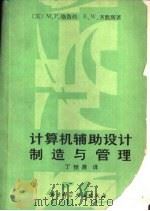
- 计算机辅助设计、制造与管理
- 1988 北京:北京科学技术出版社
-
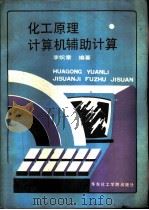
- 化工原理计算机辅助计算
- 1991 上海:华东化工学院出版社
-
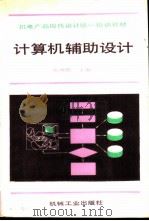
- 计算机辅助设计
- 1993 北京:机械工业出版社
-
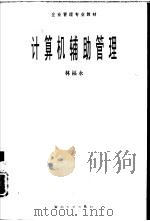
- 计算机辅助管理
- 1995 广州:暨南大学出版社
-
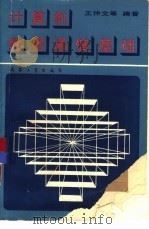
- 计算机集成制造-辅助设计/辅助制造/辅助管理
- 1989 北京:兵器工业出版社
-
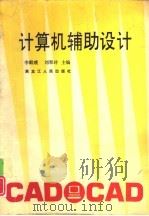
- 计算机辅助设计
- 1994 哈尔滨:黑龙江人民出版社
-

- 计算机辅助审计
- 1998 北京:经济管理出版社
-
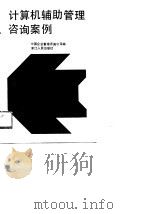
- 计算机辅助管理咨询案例
- 1989 杭州:浙江人民出版社
-
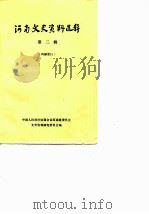
- 河南文史资料选辑 第2辑
- 1979 郑州:河南人民出版社
-

- 机械工业企业管理手册 26 计算机辅助企业管理
- 1988 北京:机械工业出版社
-
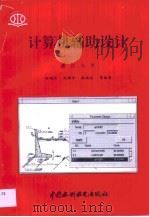
- 计算机辅助设计
- 1998 北京:中国水利水电出版社
提示:百度云已更名为百度网盘(百度盘),天翼云盘、微盘下载地址……暂未提供。➥ PDF文字可复制化或转WORD

